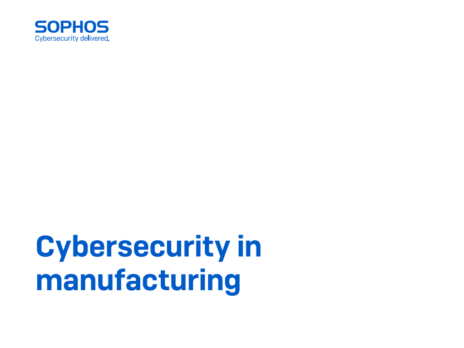
It’s been a long time since Henry Ford boasted that customers could have his cars painted any colour they liked, so long it was black. This wasn’t because Ford necessarily preferred the new Model T automobiles to roll off the assembly line looking dour and funereal. Rather, painting the car black made eminent sense from a manufacturing standpoint. The application of red paint, after all, would have made for a more complicated, and therefore slower and more expensive production line – anathema for a business aspiring to sell the most popular car in America.
Ford’s reasoning in this area came from a mixture of experience, intuition and reams of pen and paper calculations. The mind boggles at what he might have achieved with access to modern-day manufacturing techniques. A world where assembly line sensors feed into vast databases parsed by complex machine learning algorithms is one where it’s relatively straightforward to find the efficiencies necessary to paint a car red, blue or purple. Indeed, the adoption of such technologies has afforded companies new ways to plan, build and ship products to market – and led to a multiplicity of new vulnerabilities ripe for exploitation by hackers.
Threats to the assembly line
As Sophos’ latest white paper on cybersecurity in manufacturing explains, cybercriminals usually only need to throw a digital spanner in the works to get what they want. According to the firm’s data, 55% of manufacturers fell victim to hackers last year, with an average ransomware payout of £2m – higher than any other sector. The ramifications of such cyberattacks can be widespread and difficult to predict. An attack on one such victim, Wiltshire Farm Foods, in June 2022 led to the temporary shutdown of its ‘Meals on Wheels’ service, endangering food delivery services for hundreds of elderly and vulnerable customers.
Hackers aren’t just interested in common variety theft. A hacktivist group named Predatory Sparrow is one example of cybercriminals targeting companies – in this case, those based in Iran – and bringing their manufacturing processes to a halt. Other attacks, like that against Denso in March 2022, have seen major supply chains for components halted for weeks at a time, endangering the supply of larger companies like Ford, Honda and Toyota.
How can companies protect themselves? One way is for chief executives to simply remain aware of the dangers of cybercrime, and that with so much of manufacturing now augmented by digital technology, pain points exist everywhere. Investment in close-knit IT departments is also essential. Such teams need to be proactive. Nowadays, it simply isn’t enough to deploy antivirus software to protect a network. Instead, manufacturers of all stripes should focus on identifying where networks are exposed to likely intrusion and watch out for the tell-tale signs of an impending breach.
Securing the factory floor
Manufacturers can rely on Sophos in that respect. Knowing that attacks on manufacturers often start off surreptitiously, a partnership with the cybersecurity firm that harnesses its Managed Detection and Response service will see a human-led threat-hunting team utilise AI technology to identify, track down and suppress malicious activity at all times. IT teams should also use Endpoint Detection and Response, or their own Extended Detection and Response tools, to monitor networks for suspicious activity.
This kind of defence posture, as Sophos explains in its white paper, is a surefire way to obtain peace of mind on the assembly line. Free from the danger of ransomware and data theft, companies can concentrate on how to find efficiencies, boost productivity and, in the end, get the best possible version of their products out to market.
Homepage image by Jenson/Shutterstock








